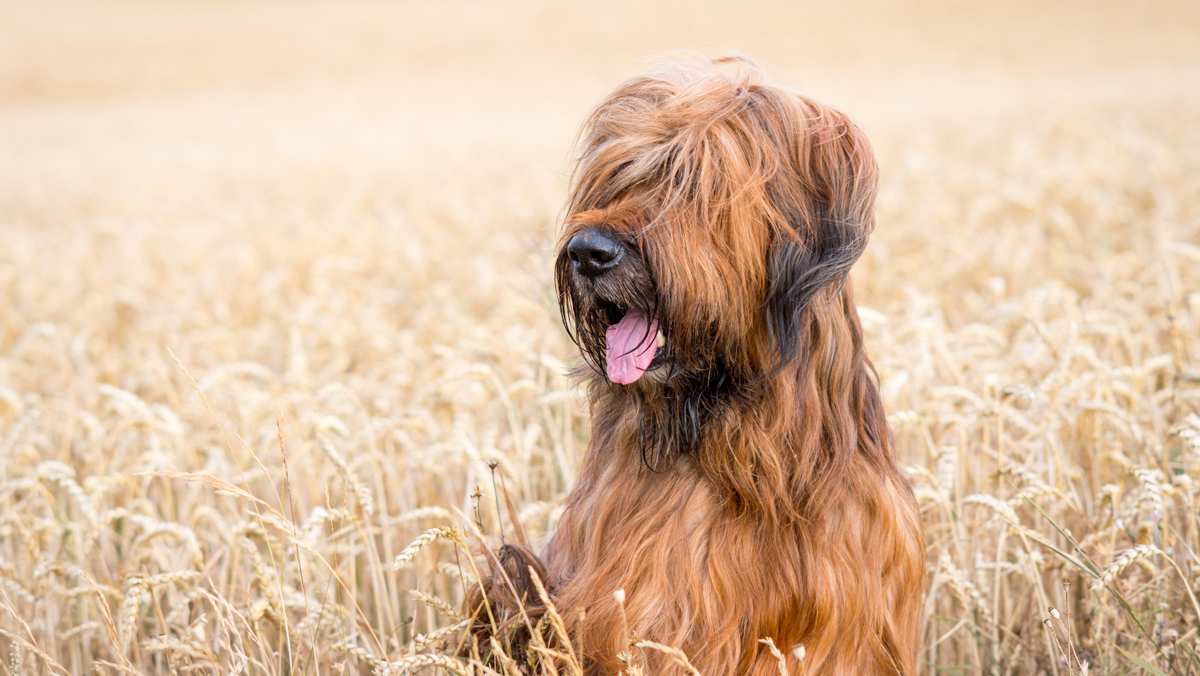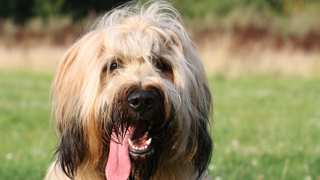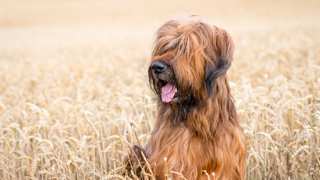Berger Briard
Berger De Brie
Brie Shepherd
Pronunciation: [ bree•ard]
The Briard is a very old breed of sheepdog native to France. These big, wooly dogs look a lot like a larger Puli but are do not have the distinctly corded coats of that breed. Although they've been around for a very long time, not much is known about them and was not known until the late 19th century.
Briards remain favored herding dogs in France, but these days they are also used as companions and are well-known for their participation in dog shows too. They are dogs who are best when they have a job along the lines of their native-born work, i.e., guarding or herding. They are wonderful family pets and they get along well with kids and most other pets.
Here are some of this breed's pros and cons:
Loves water
Loves to play
Family-friendly
Great for snuggling
Can be good for first-time dog owners
Can be stubborn
Not hypoallergenic
Aloof towards new friends
Not good for apartment life
Tends to be independent-minded
Purebred
10 - 12 yrs.
23 - 27 in.
60 - 90 lbs
OverallFamily FriendlyChild FriendlyPet FriendlyStranger Friendly
Easy to GroomEnergy LevelExercise NeedsHealthShedding Amount
Barks / HowlsEasy to TrainGuard DogPlayfulnessWatch Dog
Apartment DogCan be AloneGood for Busy OwnersGood for New OwnersIntelligence
These big sheepdogs are well-known to be patient even as they are insistent, and they are extremely hardy, relatively weather-averse and possesses a remarkable memory. Once charged with a duty, they are remiss to back down — even if protecting your children means preventing you from spanking them! Briard dogs 101 is all about understanding their dedication.
Their intelligence stems from having to work alone and on the fly in vast fields where multiple herds might engage even as dangers lurk. They have to find their way there and back with the flock intact, and this requires knowing the terrain and facing predators as well as anticipating frightened members of the flock.
The loyalty of these dogs cannot be underscored. As companions, they will make your family their herd to protect, accompany and even to guide. Don't be surprised when you are literally pushed by these dogs to get moving! They do so out of love for you.
Some of the most important Briard information you need to know is that these dogs need a great amount of daily exercise to maintain their mental and physical well-being. They are not lapdogs, and hanging around the house all day waiting for table scraps is not their way of life.
It's unknown when Briard history originated. These sheepdogs may have been present as long ago as the 8th century, when similar-looking dogs were depicted in paintings. There are positive records that date back to the 13th century, however, so these dogs can be confirmed during the Medieval period. In any case, they are certainly the oldest of the four sheepdog breeds known in France. (The other three are the Beauceron, the Picardy, and the Pyrenean.)
Where in France the Briard came is also unknown, but stories abound. Some believe the breed came from a dog that was popular in Brie, whereas there are others who think the dog is steeped in the legend of a canine who avenged his master's murder. For many centuries, this breed was called Shepherd Dog of Brie (in French: Chien Berger de Brie) and it was not until 1809 that the name was changed to Briard.
Before it became known the world over, this breed was apparently greatly appreciated by many Western leaders: Marquis De Lafayette, Napoleon Bonaparte, and Thomas Jefferson were some of those who had a Briard. Some people say that even King Charlemagne had one of these dogs — way back in the 8th century!
It took nearly another century for the standard to be written. That was in 1897, and by 1909, that standard had been modified. Up until then, the dogs had been used for shepherding and guard duties on farms. As the turn of the century approached, they became seen in dog shows. One of their earliest appearances was in the Paris dog show of 1863. After World War I, they were, like many other breeds, taken to the United States by soldiers returning home.
There are no variations of the Briard. There have been those instances whereby a Puli has been called a "Miniature Briard" (once or twice, even by dog show judges!), but there are no such dogs. To do so would require cross-breeding, and that would mean the dog is no longer a Briard but a hybrid dog.
As for a short-haired Briard, there are none of those that occur naturally. Their coats can be cut, of course, but that doesn't mean that they can be identified as a type or variety of Briard. Sometimes the Beauceron (one of the other sheepdogs native to France) might be confused for a Briard short hair, but they are a different breed altogether.
Having been brought up to be aloof of strangers, ready to court danger and to ultimately protect the flock or herd, the Briard temperament is brave, suspicious and loyal. If adopted as a companion, humans in the family become his flock. He will regard strangers with some disdain, and he will probably attempt to herd his family members when they aren't doing what he feels must be done. It should be noted that while heel-nipping may be annoying, it's not a sign of aggression in the otherwise friendly Briard personality. They are also a bit stubborn as they were bred to work alone and on the hoof. Sometimes they can anticipate the behavior of people around them, and their herding characteristics may compel them to "protect" people. They must be socialized significantly so as to react accordingly.
These are big dogs who love water, barking and activity. They are not aggressive dogs but they are extremely wary of new people, so they should be introduced to new friends carefully. Separation anxiety may be a factor to consider as well. These dogs are accustomed to being outdoors and alone for long periods of time, but when home, they expect their family to be present.
Briards are best suited to large homes with lots of outdoor space. They need room to roam and run, and they love to bark too. They may chase small animals but will be more likely to try and herd them as well as children and most anyone else. Don't get upset when they butt legs and nip heels.
These dogs shed a lot, and they may also make a mess with their beards getting wet. If you are wondering if they are hypoallergenic, they are definitely not.
The Briard is, sadly, one of those big dogs whose health problems are significant – both because they are big dogs and because they simply have more serious issues than most breeds. Perhaps the two most significant problems are bloat (which tends to happen more with big dogs) and Congenital Stationary Night Blindness (C.S.N.B), which is somewhat breed-specific. C.S.N.B. is an inherited disease and tends to be widespread in Briards throughout Europe and North America.
As for the other health concerns, here is a list of many of them:
- Cancer
- Cataracts
- Hip Dysplasia
- Ectopic Ureters
- Hypothyroidism
- Elbow Dysplasia
- Von Willebrand's Disease
- Progressive Retinal Atrophy (PRA)
Briards tend to have an average lifespan of 10 to 12 years.
Below are potential health concerns associated with Briards.
Cancer
Cataracts
Hip dysplasia
Von willebrand's disease
Progressive retinal atrophy
Hypothyroidism
Elbow dysplasia


